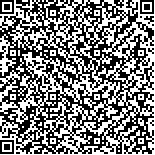赵晓科,张跃,汤健,王成,张玲,朱敏,李红英,杜森杰.限制诱导运动疗法辅助虚拟现实游戏对偏瘫儿童运动功能的影响[J].中华物理医学与康复杂志,2018,40(5):361-365
扫码阅读全文

|
| 限制诱导运动疗法辅助虚拟现实游戏对偏瘫儿童运动功能的影响 |
| The effect of combining constraint-induced movement therapy with virtual reality games in rehabilitating the motor function of hemiplegic children with cerebral palsy |
| |
| DOI: |
| 中文关键词: 脑性瘫痪 限制诱导运动疗法 虚拟现实游戏 运动功能 社会功能 |
| 英文关键词: Cerebral palsy Constraint Movement therapy Virtual reality games Motor |
| 基金项目:国家自然科学基金(81501946);南京市医学科技发展资金(YKK14113) |
|
| 摘要点击次数: 6745 |
| 全文下载次数: 7052 |
| 中文摘要: |
| 目的 观察限制诱导运动疗法辅助虚拟现实游戏对偏瘫型脑性瘫痪(脑瘫)患儿运动功能的影响。 方法 采用随机数字表法将偏瘫型脑瘫患儿50例随机分为对照组和实验组,每组25例。2组患儿均给予常规康复治疗,对照组每日行限制诱导运动疗法4 h,其中1 h在治疗师帮助下行受累侧作业治疗,另外3 h在患儿监护人帮助下完成日常生活活动治疗。实验组1 h在治疗师帮助下治疗,1 h进行虚拟现实游戏,剩余2 h在患儿监护人帮助下完成日常生活活动治疗。2组儿童均每周治疗5 d,连续治疗3周。于治疗前、治疗3周后(治疗后)采用上肢功能质量测试量表(QUEST)、中文版粗大运动功能测试量表(GMFM)、残疾儿童评估量表(PEDI)分别对2组患儿的上肢运动功能、粗大运动功能、整体社会功能进行评定。 结果 治疗后,2组患儿的QUEST、GMFM和PEDI评分与组内治疗前比较,差异均有统计学意义(P<0.01),且实验组治疗后的QUEST、GMFM和PEDI评分分别为(16.38±7.07)分、(72.79±9.96)分、(59.05±5.36)分,均显著高于对照组,差异均有统计学意义(P<0.05)。 结论 限制诱导运动疗法辅助虚拟现实游戏能显著改善偏瘫型脑瘫患儿运动功能及整体社会功能。 |
| 英文摘要: |
| Objective To observe the effect of supplementing constraint-induced movement therapy (CIMT) with virtual reality games in rehabilitating the motor function of hemiplegic children with cerebral palsy (CP). Methods Fifty hemiplegic children with CP were randomly divided into a control group and a treatment group, each of 25. All were given conventional rehabilitation. The children in the control group received CIMT for 4 hours, plus 1 hour of occupational therapy for the more-affected limb supported by therapists and 3 hours of daily training in life activities with their guardians′ help. Those in the treatment group received occupational therapy for 1 hour, played virtual reality games for 1 hour and practiced daily life activities for 2 hours per day. All of the treatments were carried out five days a week for 3 weeks. Before and after the intervention the quality of upper extremity skills test (QUEST), the Chinese version of the gross motor function measuring scale (GMFM) and the pediatric evaluation of disability inventory (PEDI) were used to evaluate upper limb function, gross motor function and the social abilities. Results After the treatment, significant improvement was observed in the average QUEST, GMFM and PEDI scores of both groups, but the average scores in the treatment group were significantly higher than among the controls. Conclusions CIMT combined with playing virtual reality games improves the motor function and social abilities of hemiplegic children with CP. |
|
查看全文
查看/发表评论 下载PDF阅读器 |
| 关闭 |